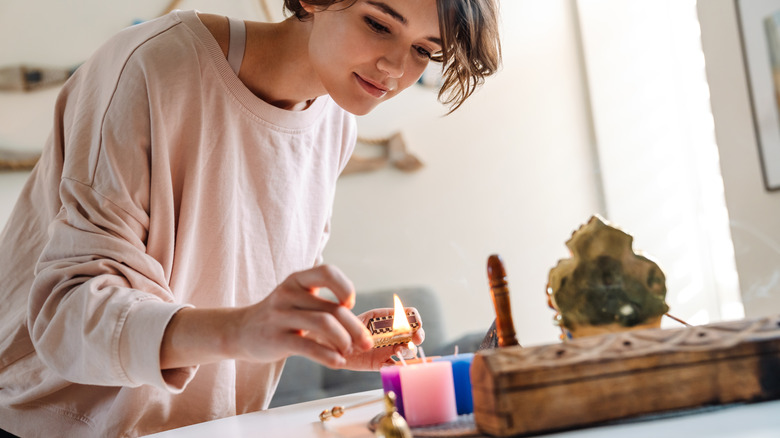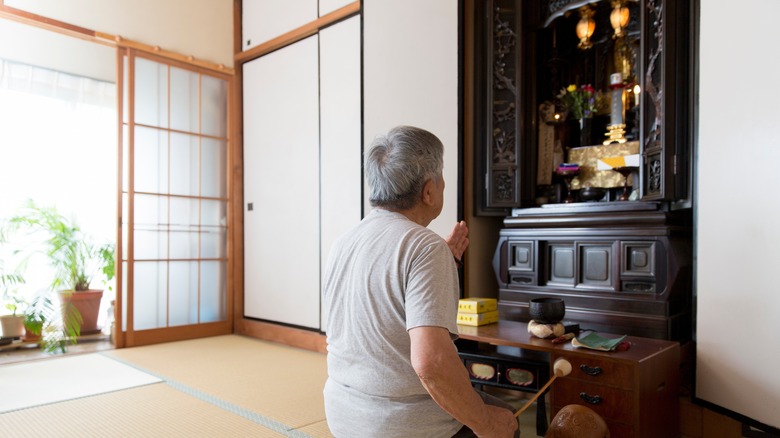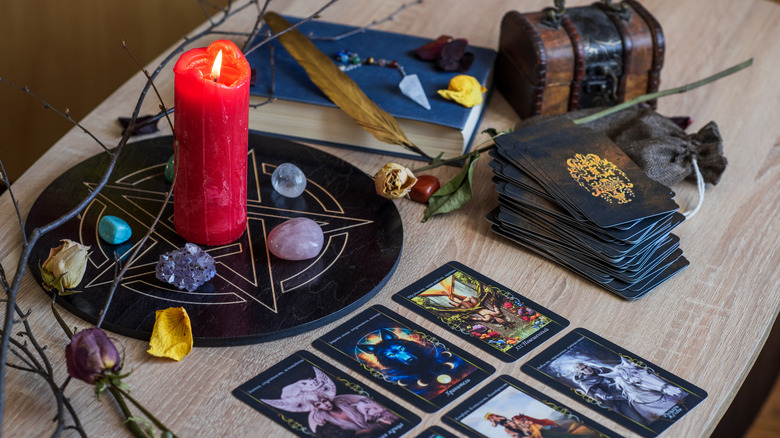What You Should Know About Creating An Ancestral Altar In Your Home
Ancestral altars have long been associated with certain religious and cultural traditions. Many people may be familiar with the practice of building an altar to celebrate Día de los Muertos, or Day of the Dead, a Mexican tradition that honors a person's ancestors who have passed on by building an altar for them to visit on November 1, the day on which the spirits of the dead are believed to be able to come back to the world of the living, according to the Smithsonian's Mexican Museum. Other cultures and religions, including Buddhism and some African and indigenous traditions, sustain the practice of keeping an altar within their homes for their ancestors on a more permanent basis, as NPR explains.
However, you don't need to belong to any specific religion or be descended from a particular culture in order to erect an ancestral altar. Whether you want to have a more temporary altar in your home to commemorate a particular ancestor or occasion, such as Día de los Muertos, or you want to establish a permanent space in your residence to pay homage to your ancestors, the practice of constructing and engaging with ancestral altars can have significant benefits.
Why it's beneficial to have an ancestral altar
Not everyone is connected to their ancestors or their ancestral traditions. Dedicating a space inside your home to focus on your ancestors, the people responsible for who you are today, can be a way to establish that connection, or even to strengthen an already-existing connection, according to NPR.
Altars can be a way of grounding you in both the past and the present. In a society that's becoming more and more isolated, establishing a connection with your ancestors can help you to feel less alone and serve as a source of encouragement, a reminder that you're not the only one who's facing your problems and that if your ancestors can overcome their challenges, you can as well.
Building an ancestral altar in your home works best if you embark on the task with a sense of intention. Before beginning construction of your altar, it can be helpful for you to ask yourself what you're hoping to gain out of the experience of engaging with your ancestors.
Are you hoping to better understand your ancestors' values, philosophies, religions, and cultures with the intent of bringing those value systems into your daily life? Are you seeking a deeper comprehension of who you are as a person, and how your ancestors' actions have informed the person you've become? Maybe you just want to create a brief moment to pay homage to the people who paved the way for you, grounding yourself in a moment of gratitude.
How to build and engage with an ancestral altar
Your first decision when it comes to building your altar is deciding where in your home you'd like it to be located. NPR recommends finding a special spot, but "special" can be defined however you would like it, based on whatever area feels most special to you. Altars can be located in bedrooms on dressers, on full public display on a side table in your entryway, or tucked away into a quiet closet — find what location is best and where you would like to engage with your ancestors.
Altars comprise physical objects, so once you have designated a location for your altar, it's time to start building it with objects and trinkets that call to mind your ancestors. If you're in possession of objects that belonged to your ancestors, such as your grandmother's jewelry or your great-uncle's deck of cards, this part can be easy. If you don't have any objects that physically belonged to your ancestors, you can still bring in objects that remind you of them. For example, if your grandfather was a farmer, you can add a pair of work gloves or a packet of seeds.
Finally, create an intentional practice of engaging with your altar, a ritual of sorts. It can be a formal prayer, a meditation, a casual conversation with your ancestors to tell them about your day or your week — again, whatever works best for you is what is most appropriate for how you use your altar.


